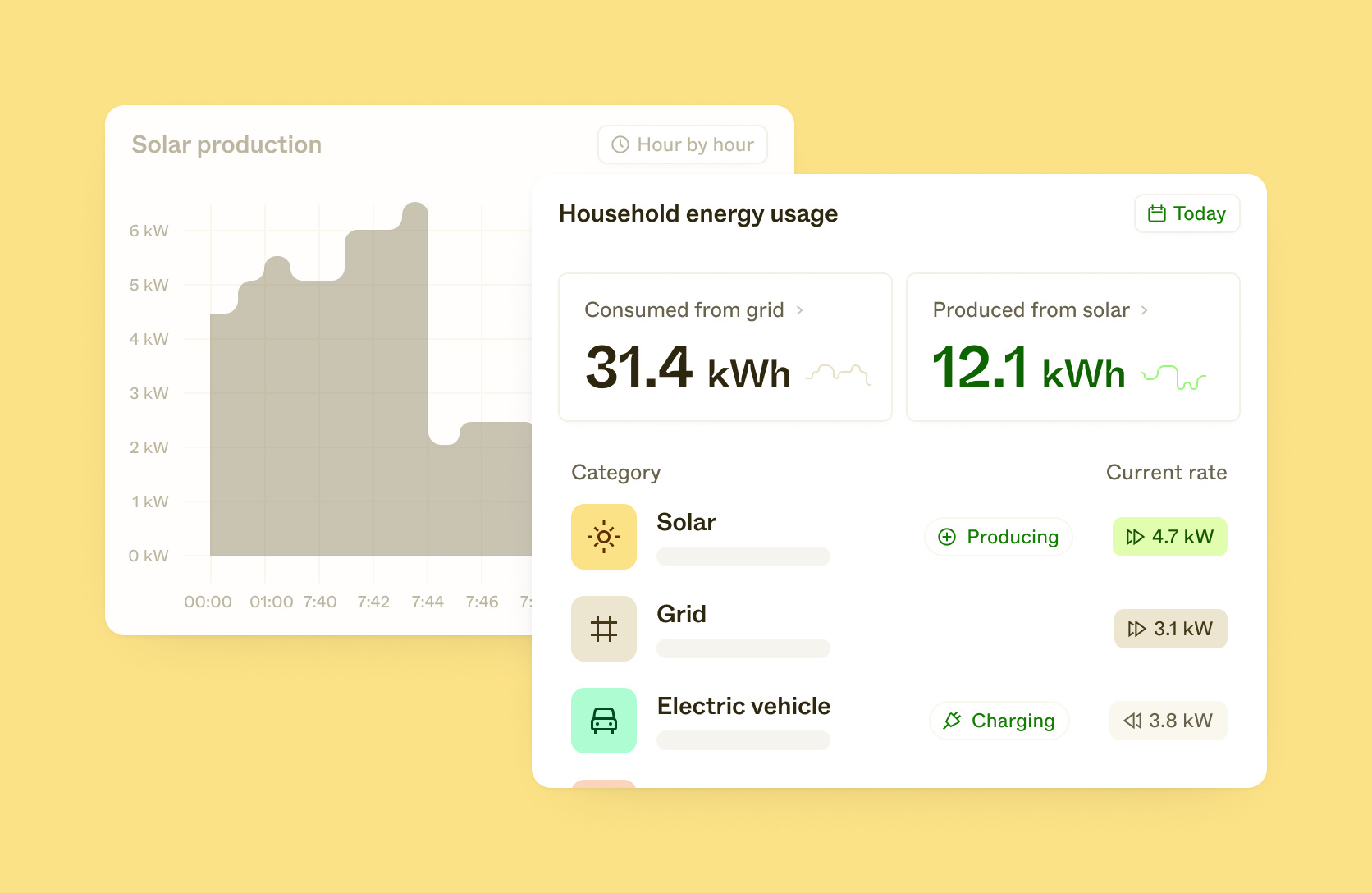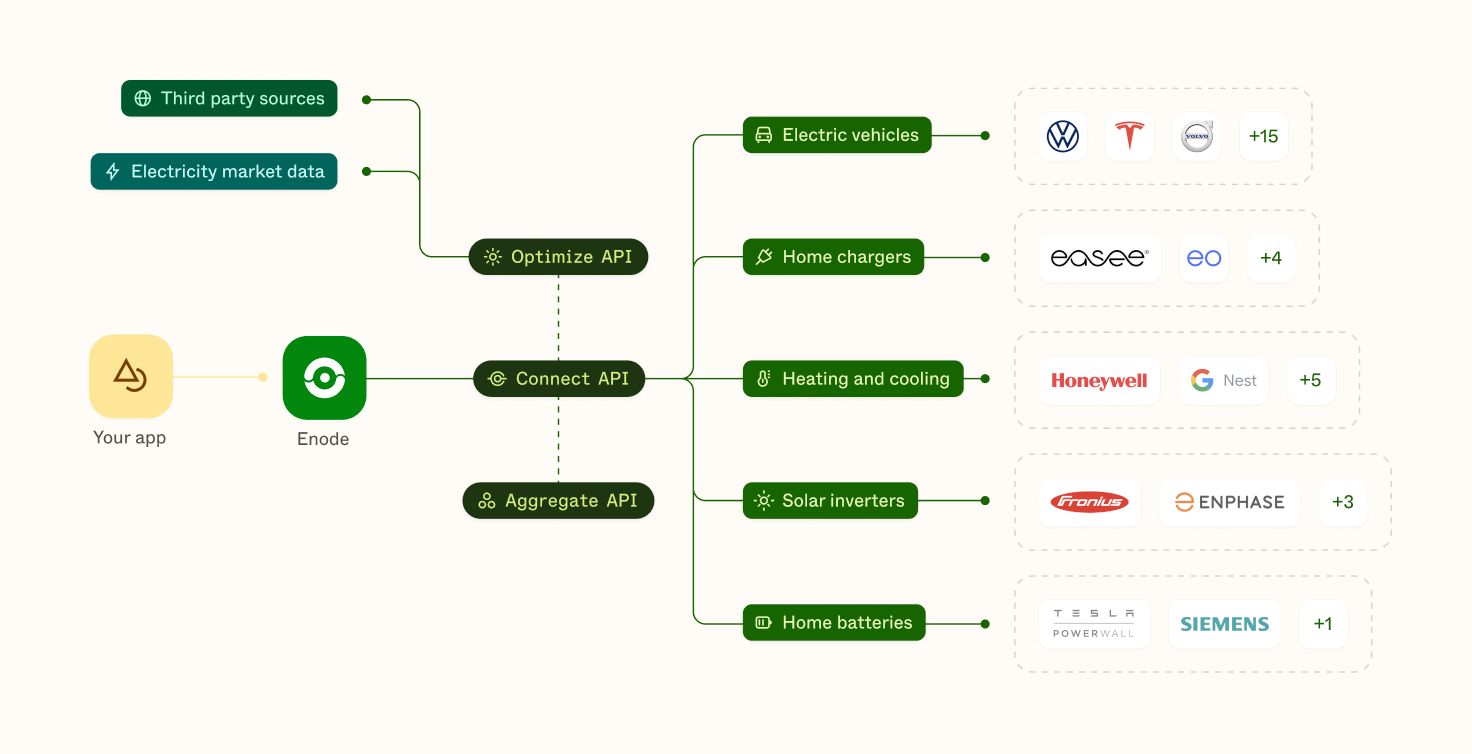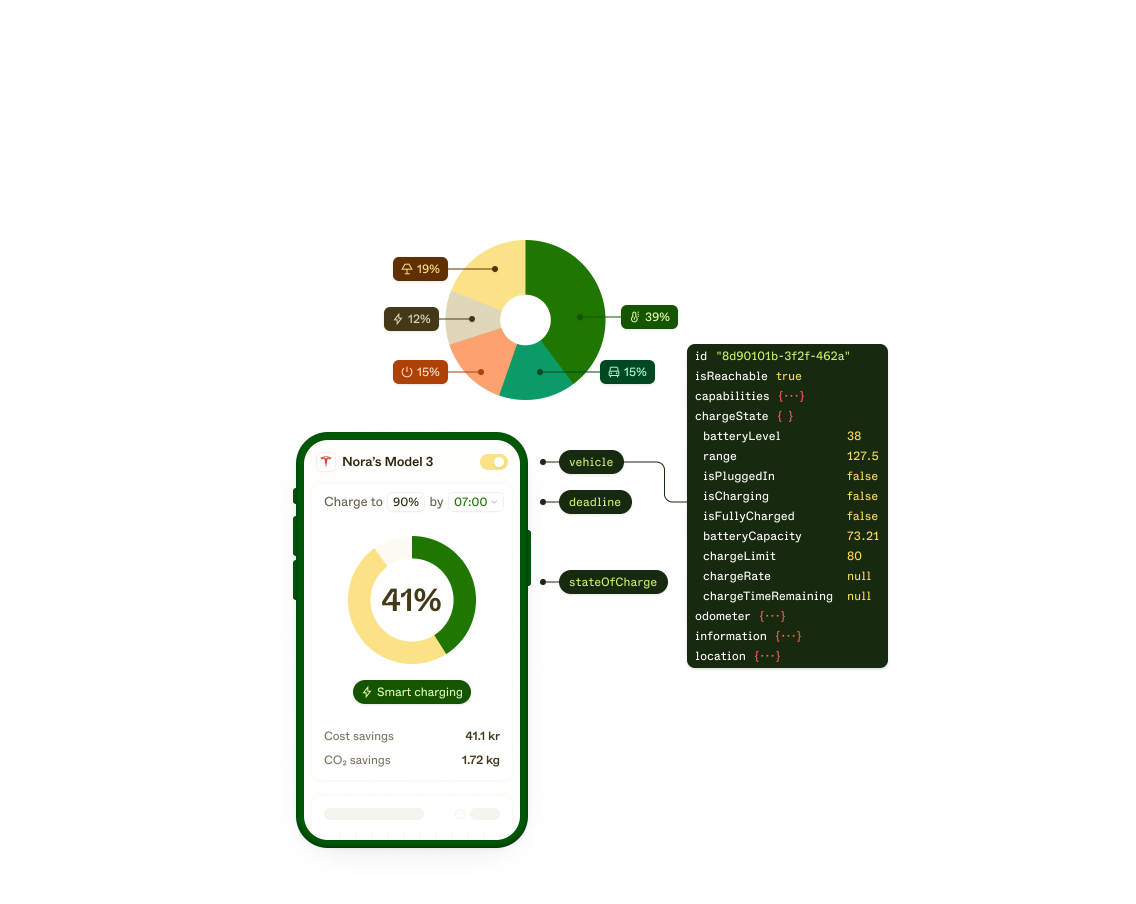A complete guide to Solar inverter APIs — with use cases

Solar energy is a key part of our sustainable future. This includes large solar plants on the GW scale and smaller residential panels on the kW scale. Everything is needed to push the needle on renewable energy production.
For residential solar, the solar inverter installed in the house produces valuable data. Data on real time and historical production can be access via the Solar Inverter API. What is an API? Well, an Application Programming Interface (API) is a way for computers to access data from another computer. So the Solar inverter API is made to allow for sharing of the solar data to external systems.
An example is the solar inverter app, that comes with many modern inverters like Fronius and Enphase. Here you can see all your solar panel data and also combine it with other energy data like local prices to see how much you saved each day, month and year. Pretty cool!
These solar inverter APIs can also share the same data with other apps and services, and that is what we will talk about in this complete guide to solar inverter APIs.
So, let’s go through what we will learn today:
- What is a Solar Inverter API?
- All the data you get with an Solar Inverter API
- The best use cases to build on top of an Solar Inverter API
- Solar Inverter OEMs with available APIs
- How can I access these Solar Inverter APIs for my app
- Next steps on your solar inverter API journey
What is a Solar Inverter API?
Let’s start with the basics. What is a solar inverter API?
As mentioned, the solar inverter in your house monitors the real-time production of energy produced by the solar panels. This data is exposed via the solar inverter API to be used by the solar inverter OEM and others who would like to access the data.
The data produced by your solar inverter is your personal data, and it is up to you if you want to link this data source to other systems. Maybe you want your utility to automatically collect your renewable energy production for local incentives or have your EV automatically charge when you are producing excess solar. There are a lot of use cases enables by the Solar API that is continuously producing and sharing your solar data.
All the data you get with an Solar Inverter API
So what data can you get access to via the solar inverter API. Let us do a quick summary.
Inverter info
The solar inverter usually shares some basic info about itself via the API. This includes brand, model, capacity and other basic data to identify the inverter as your own.
Real time production
Most importantly the inverter API shares the real-time production of solar energy. Usually presented in kW. The data resolution varies from updates every second to every minute. A few inverter brands share data less frequently also, meaning they are less suited for real-time energy management in your house.
Historical production
Some of the more advanced solar inverter APIs also collect the real-time production data and presents it as the historical production. This enables you to collect aggregated energy data on day, week, month, and year, without doing the work yourself.
Combine solar data with utility data
Even though the data from these APIs are fairly limited, the nice thing is that they can be combined with other energy data. Utility data is one example of that, where your energy provider can easily show you how much of your energy bill was offset by the solar panels on your roof. You can also use data from electric vehicle APIs or thermostats APIs to give the user a complete overview of their energy consumption and production.

It is worth keeping in mind that not all inverters offer an API (unfortunately). Some of the older models are not equipped with 4G or Wifi-connection, making continuous data sharing impossible. On the bright side, some solar inverter OEMs are offering to retrofit these old inverters with connectivity modules to get them up and running in the connected energy world.
The best use cases to build on top of an Solar Inverter API
All this energy data enables a broad set of use cases for end-users. After having worked with solar APIs for some years we have seen many that consumes really engage with.
Real-time Production overview
Most people with solar installed loves energy data. They are passionate about how their energy consumption develops and how it affects the planet. The use case we have seen become the most valuable is therefore realtime energy production. Displaying this in a creative way for the kW produced in real-time is the way to go.
Historical solar production and export
Similar to real-time production, historical solar energy data is very valuable information for all solar owners. Listed in kWh for each day, week, month or year, the historical production also shows consumers how much they are saving on the energy bill.
Historical production can also be mapped to the CO2 intensity of energy supply, showing what carbon offset the renewable energy production is contributing to.
Solar smart EV charging
The solar inverter data coming from the API can also be combined with e.g. EV API to build more advanced use cases. The best example is solar smart charging of EVs, where the end-user can automatically charge their EV when they have excess solar production. This optimizes for renewable energy supply and reduces the strain on the grid. Win, win!
If you want more inspiration, check out these solar inverter API use cases.
Solar Inverter OEMs with available APIs
More and more Solar Inverter OEMs are creating connected devices with solid APIs for data sharing. This pushes innovation in the energy sector forward, something we are huge proponents for here at Enode. Solar inverters are also an in important Distributed Energy Resource (DER), which will be key to a sustainable future.
Not all APIs are similar in functionality and sophistications, so let us review the status with the most prominent solar inverter OEMs:
Enphase API
The Enphase solar inverter API is the most advanced out there. It provides excellent data coverage and reliability, and also has a low response time. This is most likely due to Enphase being a technology focused energy company, with the largest developer force of all OEMs. The API also allows for gathering of historical production data, making development on top of the API easy.
Fronius API
The Fronius API works for many of the latest inverters launched by the popular inverter OEM. Data access is good, with real time data being provided frequently. There are no historical data provided from the API, so this is something that must be build by the API user.
Solis API
The Solis API is very similar to the Fronius API. Good access to data with a high reliability. Some of the older models doesn’t support Wifi or 4G connection, so there might be need for an upgrade if you want to have users connected on this inverter.
SolarEdge API
SolarEdge have one of the more advanced solar inverter APIs. Not at the same level as Enphase, but very good compared to companies with a similar technology department. The API responds fast and the data is accurate. For some models there is also historical production available, making this API easy to work with.
SMA API
Based on our testing, SMA has the least sophisticated API at the moment. This does not mean it is terrible, just slightly more difficult to work with than the rest of the inverter APIs. We recommend checking if the data resolution is on par with your use case, as this can vary a lot depending on the inverter model.
How can I access these Solar Inverter APIs for my app
So the question that remains is “how can I access this data in my app?” We have some options for you to consider.
Enode
At Enode we have built an all-in-one solar inverter API, where you get access to all the most popular brands in a single API. We have also built smart modules on top of the data, like production statistics and solar EV charging, saving you hundreds of development hours. Check out how you can connect to all solar APIs here.

Direct-to-OEM
If you are a distributor of solar installations the OEMs in some cases give you access to their API via a direct relationship. This can make development easier than integrating yourself, but it will on the other hand take time if you are to work with all OEMs directly.
Build integrations yourself
You can also build the same integrations that we have done yourself. If you have large team of idle backend developers, this might be a viable route. Jokes aside, some of the inverters are easier to work with than others, like Enphase which is a good place to start
No matter how you want to integrate to these APIs we are curious about your use case. If you want to discuss how you can enable smart energy management with your users across DERs like EVs, EVSEs, Thermostats and inverters, please reach out for an in-depth energy talk!
Next steps on your solar inverter API journey
If you made it all the way here you should have a deep understanding of solar inverter APIs. That was at least the goal.
And if you want to learn even more, we have some great resources for you.
- Check out the energy management use cases for solar APIs
- Check out the SMA API here
- Install solar panels yourself and start playing around ☀️
